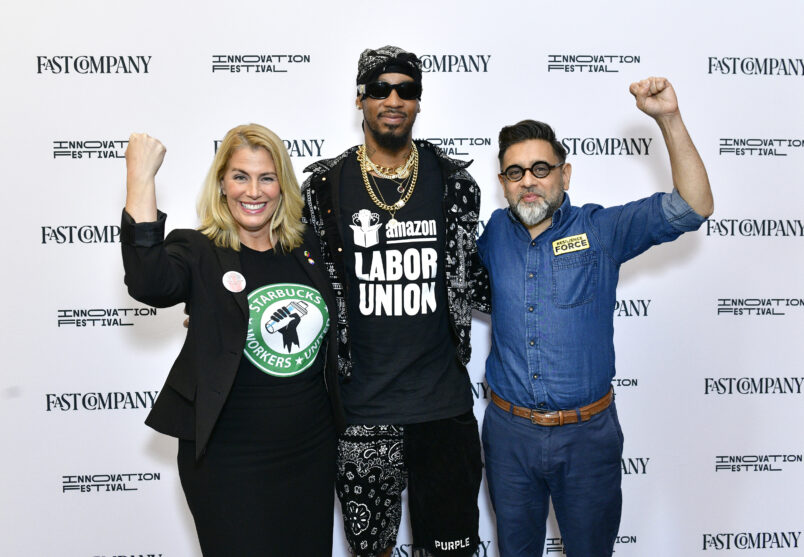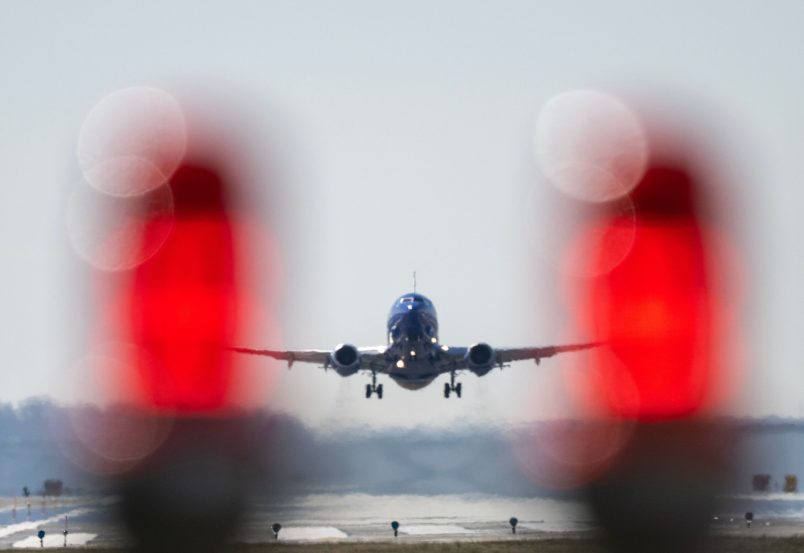In the early morning hours of Jan. 11, a hack shut down the FAA’s systems, grounding all flights nationwide. I had a flight that morning to Minneapolis–St. Paul with a tight connection to Boise, Idaho. Once the ground stop was lifted, my Delta flight left New York’s LaGuardia.
Unfortunately — because of the delay — there was no way I could make my connection in Minnesota. The next flight to Boise was a staggering ten hours later. I was one of seventeen people that needed to make that connection, and ended up stuck in the Twin Cities. I eventually made it to Idaho in the wee hours of the morning — more than 15 hours after I was supposed to.
It was my personal encounter with a problem you may have experienced — that many Americans have experienced — especially, it would seem, in the last few months. A version of it unfolded on a massive scale only weeks before my attempt to reach Idaho. Southwest Airlines’ outdated systems failed to keep up with demand in late December during the key holiday season — a development which airline insiders had warned would happen for years if the Dallas-based budget carrier did not change its ways.
The debacle led to thousands of canceled flights and left millions stranded in one of the busiest times for the industry. Southwest largely blamed a severe weather event for the meltdown. However, no other major carrier experienced such a robust and widespread disruption.
There are two factors at play in these episodes, which both speak to how thin and precarious America’s system of air travel has become.
First, consumers simply have fewer options available to them than they did a decade ago, and, as a result, airlines have considerably more power.
Second, America’s air travel network is easily disrupted. A single point of failure can have widespread ripple effects.
Both of these factors have caught the attention of an increasingly powerful force in the airline industry: organized labor. In 2023, unions are at the vanguard of providing a check on a set of corporations that Americans are fed up with.
The growing labor movement in the United States is having a moment. From Starbucks to Amazon, the American worker is taking on the powerful corporate players that are — more often than not — concerned more with the welfare of their stock tickers than the welfare of the workers manning their stockrooms. Led by unions, the fight has not been this robust in more than half a century.
Nowhere is this clearer than in the airline industry. Flight attendants, baggage handlers, and pilots are all fighting in tandem — a move that puts enhanced pressure on the airline industry. Employees at airports including Dallas/Fort Worth, New York JFK and LAX all went on strike at various points over the last year.
“People are seeing workers who previously sort of were working in the dark. There’s solidarity,” Sara Nelson, International President Association of Flight Attendants-CWA, AFL-CIO tells Talking Points Memo.
The success of unions in the airline industry, and the sectors that support the airline industry, is in part because airports are a closed system.
Think about it: Outside the confines of an airport, if baristas at Starbucks go on strike, consumers can go down the street to another coffee shop. In an airport, there’s often no other option. All baggage is handled by members of a union. Planes are flown by members of a union. Flights are staffed by members of a union. Consumers’ non-union choices are limited — or nonexistent.
“Workers are more cognizant of all the different work groups that make it possible for aviation to run,” continued Nelson.
Behind it all is a key irony: The growing cannibalization of the business (which consequently has meant fewer options for consumers) has actually given workers more leverage in the biggest union drive in the airline industry in about half a century.
How Did We Get Here?
After 9/11, the airline industry suffered as America’s collective trauma made air travel much less appealing. In the months after the terrorist attack, air travel tanked. September 2001 saw 33 percent fewer passengers than the month prior. Travel didn’t rebound to August 2001 numbers until March 2004.
Ultimately that led to the great consolidation of the airline industry. Since 2001, nine airlines have disappeared — with a tenth possible in the coming months as JetBlue tries to acquire Spirit Airlines. (The Department of Justice has sued to block the merger.) Over the last two decades, the likes of Northwest Airlines, US Airways and Continental Airlines disappeared from jetways, absorbed within a homogeneous wave limited to a few major carriers.
That makes things tough for both consumers looking for options and workers who may want to work for a different air carrier. For unions, the silver lining is leverage: with such control over the market, unions have much more power than they once did.
An Alaska Airlines pilots’ strike last year, which came during the airline’s investor relations day, provides an example. The strike forced the carrier’s hand. It had to cancel more than 100 flights, including 66 at its hub at Seattle/Tacoma International Airport. The impact was significant for travelers in the region: Alaska Airlines represents more than half of Seattle/Tacoma’s market share. It was massively disruptive for thousands of passengers with canceled or delayed flights. That means missed connections, late arrivals, and tons of headaches.
In May, the pilots’ union authorized another strike that would mirror April’s. That idea of more strikes spooked the airline and jumpstarted negotiations. By September the union and airline management came to an agreement.
Alaska’s strike set the stage for something larger.
The Seattle-based carrier only represents a little more than 6% of the U.S. market share whereas Delta Airlines alone controls more than 17 percent of the U.S. market share. A Delta Airlines pilot strike ahead of the July 4th weekend led by their union caused thousands of delays and hundreds of cancellations. The disruption grabbed the attention of national news organizations.
“I think what it really means is that a lot more of the public are looking at this. That creates more pressure,” adds Nelson. (Nelson, with the backing of Senator Bernie Sanders (I-VT), was one of two candidates the Biden administration recently vetted for Labor Secretary.)
After months of negotiations, the pilots’ union won a 34 percent pay raise over the course of three years.
That moved the needle more broadly across the industry. Not long after Delta’s move, American Airlines’ CEO Robert Isom vowed to raise pilot pay at the Dallas based carrier to match one of its direct competitors.
Regardless, the following day the Allied Pilots Association, (American Airlines’ pilots union) approved a strike authorization vote — a move that holds the airlines’ feet to the fire to stay true to its word.
“APA remains committed to reach an agreement with American Airlines management in the near term, but every APA pilot understands actions speak louder than words and we must prepare for any eventuality,” the union said in a release.
Delta’s flight attendants also pushed for better wages. Their pay trailed American and United Airlines in 2019. Then they got a union for the first time. The next year — with a new set of advocates — the rankings changed. In 2020, Delta flight attendant wages ticked up — surpassing United.

Delta is “one of those companies that’s like ‘we are a family and have southern values.’ Those values seem to be union busting,” Nell McShane-Wulfhart, author of The Great Stewardess Rebellion, tells Talking Points Memo.
That historical precedent is explicit. The air carrier has been successful in union busting efforts before. In 2010, flight attendants rejected unionization following what they alleged was a robust anti-union campaign by the airline. It allegedly included a number anti-union messaging tactics from physical handouts rife with misinformation to singling out individual voters both on and off the clock.
Despite recent momentum, it is unambiguously clear that airline unions face a consistent uphill battle. Regardless, McShane-Wulfart says she has high hopes that the movement has the wind at its back.
COVID-19 is another factor in the recent wave of organizing. In part, the COVID-19 pandemic exacerbated the pain points of the modern economy. In March 2020, there were 96 percent fewer people hitting the skies than the month before. As customers gradually returned, flying was less enjoyable than ever — as was the experience of working in the airline industry, where employees faced abusive verbal and sometimes physical attacks from anti-maskers and others who objected to COVID protocols. According to the FAA in 2022, there were more than 2,300 reports of unruly passengers.
Service Worker Momentum
Service worker movements are also taking advantage of the way in which airport terminals are closed systems to operate in tandem with pilots and flight attendants unions.
Airport employees face challenges to organizing not faced by other industries, including national security. That’s not something service workers outside of airports have to worry about if they decide to unionize.
“The federal government can get involved and say that it’s in the interest of national security and national economy. They stop actions in the airports,” Kate Bronfenbrenner Director of Labor Education Research and a Senior Lecturer at Cornell University’s School of Industrial and Labor Relations tells TPM.
She also points out that access issues are also harder for union organizers to get on site.
“They can’t go through security. That’s much harder for union organizing. You have to have a ticket to go through security and if you disrupt it can be seen as a threat to national security,” says Bronfenbenner.
But there are advantages too: perhaps especially the way in which airport terminals are closed systems to operate in tandem with pilots and flight attendants unions. That makes a difference.
“People when they’re flying need things urgently. If they can’t make their flight or get food, they get angry and they put pressure on airports,” Bronfenbenner adds.
That means leverage. In the fall, restaurant workers at San Francisco International Airport hit the picket line. 1,000 people walked off the job as they called for higher pay. In turn, the airport notified travelers that food options would be sparse. Three days later, workers got a raise.



